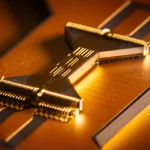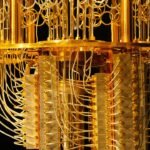Interview with Mr.Steve Wozniak
Interviewer: Good morning, Mr. Wozniak. It’s an honor to have you here for this interview. Thank you for joining us today.
Steve Wozniak: Thank you for having me. I’m delighted to be here and share my thoughts.
Interviewer: Let’s start by discussing your journey with Apple. As one of the co-founders, you played a crucial role in its early days. What inspired you to start Apple, and what were your goals at the time?
Steve Wozniak: Well, my passion for technology and computers was a significant driving force. Steve Jobs and I shared a vision of bringing computing power to the masses, making computers accessible and user-friendly. Our goal was to create a personal computer that could empower individuals and change the world. We believed that everyone should have the ability to own and use a computer without needing advanced technical knowledge.
Interviewer: The Apple II, which you designed, played a pivotal role in the personal computer revolution. What challenges did you face while developing it, and how did you overcome them?
Steve Wozniak: Building the Apple II was a labor of love, but it came with its fair share of challenges. One of the main obstacles was cost-effectiveness. We wanted to create a powerful yet affordable computer, which meant finding creative ways to optimize the design while keeping costs down. Another challenge was developing the necessary peripherals and software to make the computer user-friendly. We overcame these hurdles through constant iteration, collaborating closely with our team, and pushing the boundaries of what was possible at the time.
Interviewer: You’re renowned for your engineering prowess and your contributions to the early days of personal computing. Looking back, what achievements are you most proud of during your time at Apple?
Steve Wozniak: It’s difficult to pinpoint just one achievement, as the journey itself was incredibly fulfilling. But if I had to choose, I would say I’m most proud of the design and engineering of the Apple II. It was the first computer to come with color graphics and a built-in BASIC programming language. The Apple II set a new standard for personal computing and became a platform that inspired countless individuals to explore the possibilities of technology. Witnessing the impact it had on people’s lives was truly gratifying.
Interviewer: Since leaving Apple, you’ve remained active in the tech industry and have been involved in various ventures. Could you tell us about some of the projects you’ve been working on lately and your focus areas of interest?
Steve Wozniak: Absolutely. After leaving Apple, I continued to explore my passion for technology and innovation. I’ve been involved in several startups and have focused on areas such as education, robotics, and philanthropy. Education, in particular, has been a significant interest of mine. I believe in the power of education to transform lives, and I’m always looking for ways to make learning more accessible and engaging through technology.
Interviewer: With the rapid advancements in technology today, what advice would you give to aspiring entrepreneurs and innovators who are looking to make an impact in the tech industry?
Steve Wozniak: My advice would be to follow your passion and stay true to your vision. Don’t be afraid to take risks and think outside the box. Surround yourself with a diverse team of talented individuals who share your passion and can contribute different perspectives. Always be open to learning, as the tech industry is constantly evolving. And most importantly, never lose sight of the human aspect. Technology should always serve the needs of people and enhance their lives.
Interviewer: Thank you, Mr. Wozniak, for sharing your insights and experiences with us today. It has been a pleasure speaking with you.
Steve Wozniak: Thank you for having me. It was my pleasure. Keep pushing the boundaries of what’s possible and continue to inspire others through technology.































